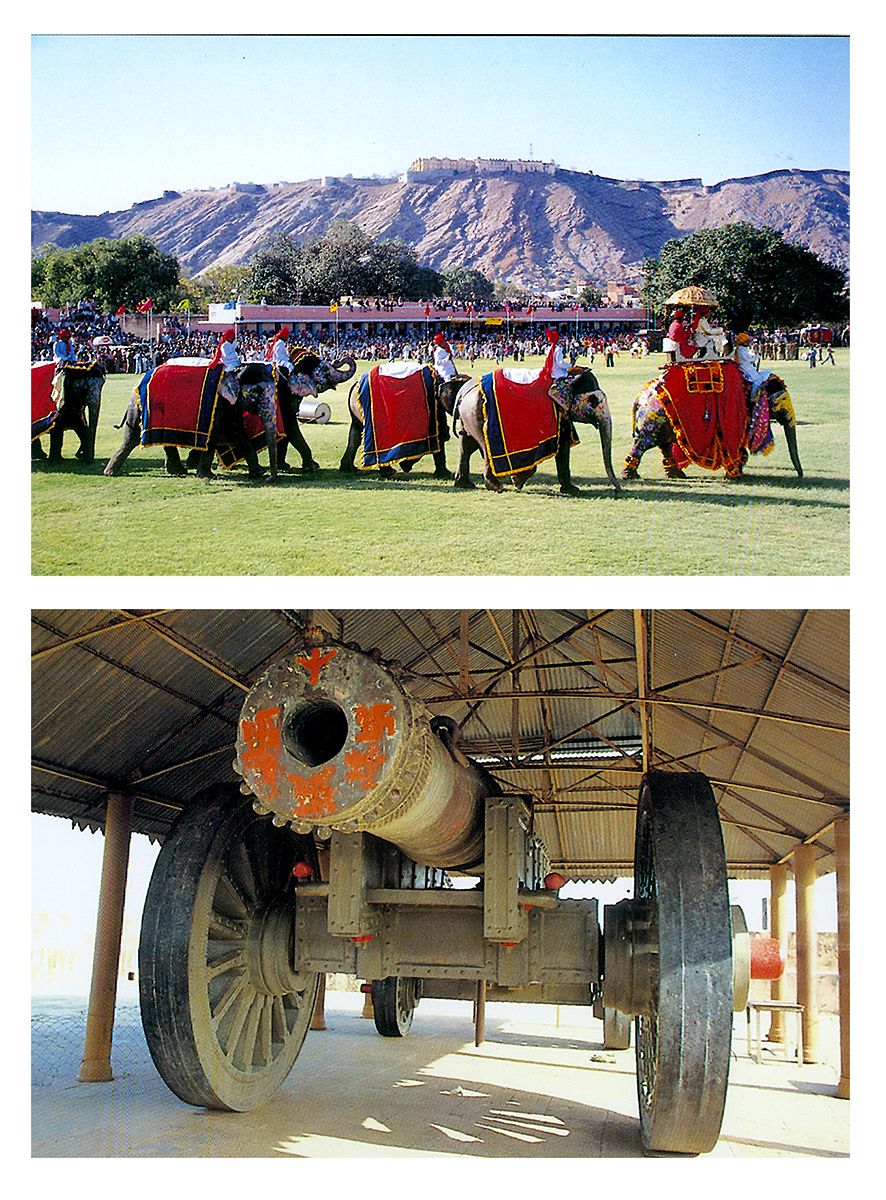Elephant Festival - The Jaipur Elephant Festival is a great opportunity to see the sturdy symbol of Rajput royalty, the elephant, at its finest. The festival gets underway with a traditional procession of decorated elephants. They proudly parade up and down, like catwalk models, to an appreciative crowd. Elephant beauty contests, folk dances, and a tug-of-war between elephants, locals, and foreigners are all regular events.
Elephants symbolize Rajput royalty according to the traditions of Rajasthan. In fact, the elephant itself has a historical significance in Indian traditions. According to Indian Mythology, gods and the demons stirred the ocean, in the hopes that they would become eternal. Suddenly, nine jewels also known as the “navratnas” surfaced from the ocean. Of the nine jewels that reappeared, one of them was an elephant. Since then, the elephant has been regarded as a precious animal.
Jaivana Cannon - It is the largest wheeled cannon ever constructed. It was cast in 1720 by Maharaja Sawai Jai Singh II of Jaipur. At the time of its manufacture it was the world's largest cannon on wheels of the Early Modern Era.
It is located at the Jaigarh Fort in Jaipur. The Fort is situated on the promontory called the Hill of Eagles of the Aravalli range. it overlooks the Amer Fort and the Maota Lake, near Amer in Jaipur.
This 20 feet long barrel is made of alloy steel and its weight is 50 tons. The Jaivana cannon rests on six massive wheels, each 9 feet in circumference. Four pairs of bulls rotated the gear system made from thick wooden crossbars fixed to a central beam. A 776 mm long elevating screw was used for raising and lowering the barrel. 100 kg of gun powder can be loaded to on the cannon.
The design of the barrel is floral. An elephant rests on the tip of the barrel, and a pair of peacocks are carved in the center. The rear of the barrel is decorated with a pair of ducks.
The cannon had a range of 22 miles and used 50 kilogram balls.
Four elephants were used to swivel it around on its axis.[
The Jaivana Cannon was only fired once by the Jai Singh II, as a test-fire in 1720. The impact is said by many locals and tourist guides to be powerful enough to have caused a depression where a pond can be seen today. During the first firing, eight people and one elephant were reportedly killed by the shockwave and many houses collapsed in Jaipur.
It is mounted on wheels. It can fire in any direction. Presently a tin shed has been built to protect it from the impact of weather.



